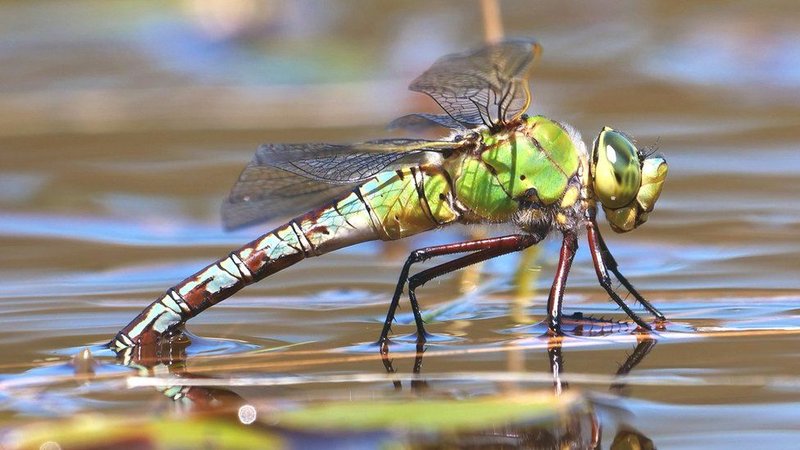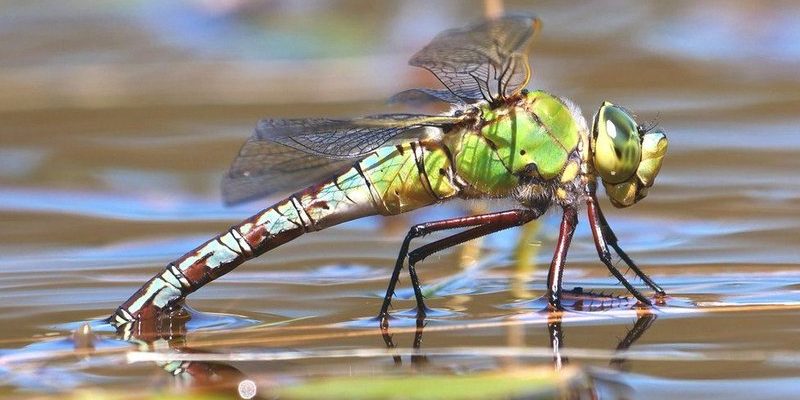
Imagine for a second that the world’s a giant puzzle, and each piece represents a different part of our ecosystem. If one piece changes, the whole image can be affected. For dragonflies, this puzzle piece might just be the changing temperatures and patterns of rainfall. Let’s dive deeper into how climate change is shaking up the lives of these fascinating insects.
Understanding the Life Cycle of Dragonflies
Dragonflies begin their lives not in the air but underwater. They lay their eggs in or near water bodies, where the larvae hatch and grow. This stage, known as the nymph phase, can last from a few months to several years, depending on the species and environmental conditions. During this time, they are voracious predators, preying on other aquatic life, which makes them crucial players in their ecosystems.
Now, here’s the thing: dragonflies are highly sensitive to their environment. Changes in water temperature, acidity, and quality can drastically affect their growth and development. If water bodies warm up due to climate change, it can speed up their life cycles. While that sounds good, it can actually lead to mismatches in food availability and predator-prey dynamics, causing survival challenges.
In essence, the life cycle of dragonflies is closely tied to the health of aquatic ecosystems. As climate change continues to alter these environments, it’s not just the dragonflies that suffer; it’s a ripple effect impacting many species, including fish and amphibians.
Temperature Changes and Dragonfly Distribution
Temperature is one of the primary factors driving climate change, and it’s having a significant effect on where dragonflies can thrive. As global temperatures rise, many species are shifting their ranges toward cooler areas. Some dragonflies are moving north or to higher altitudes in search of better conditions.
You might be wondering, why does this matter? Well, when species migrate, it can disrupt existing ecosystems. For instance, if a dragonfly species moves into a new region, it might outcompete local species for resources, leading to declines in biodiversity. Additionally, these newcomers may introduce diseases or parasites that the local dragonflies aren’t equipped to handle.
Moreover, as habitats shift, it might also impact their mating behaviors. Dragonflies rely on specific environmental cues, like temperature and humidity, for reproduction. If their ideal conditions are altered, it could lead to mismatched timing for breeding and food availability.
Habitat Loss Due to Climate Change
Another aspect of climate change affecting dragonflies is habitat loss. Increased temperatures and erratic weather patterns can lead to the drying up of wetlands and ponds, which are crucial for dragonfly reproduction. Without adequate water bodies, there’s simply no place for these insects to lay their eggs and for their nymphs to develop.
Droughts, which are becoming more frequent due to climate change, pose a severe threat. You might think, “What’s the big deal about a dried-up pond?” Well, a dry pond means a lost habitat for dragonflies, and in many cases, it can decimate entire populations. This isn’t just about dragonflies, either; many other species rely on the same wetland ecosystems for survival.
To make matters worse, urbanization and land development squeeze these habitats even tighter. As humans continue to pave over green spaces, the chances for dragonflies to find suitable breeding ground diminish even further. It’s a tough world out there for our delicate winged friends.
Water Quality and Dragonfly Health
Water quality is another significant factor in the health of dragonfly populations. Climate change can contribute to pollution runoff, which affects the chemical makeup of water bodies. This can lead to increased acidity and nutrient overloads, creating harmful algal blooms. These blooms can be deadly for aquatic life, including dragonfly larvae.
One of the most alarming effects of poor water quality is its impact on dragonfly larval development. When larvae are exposed to pollutants, their growth can slow or halt completely. Some species may even become more susceptible to diseases, making it even tougher for them to thrive.
Additionally, as the climate varies, it can change the types of vegetation around water bodies. The native plants that help sustain healthy ecosystems might struggle to survive, further reducing the resources available to dragonflies. In a nutshell, cleaner water means healthier dragonflies, and as climate change threatens this balance, both the insects and their surrounding environments pay the price.
The Role of Dragonflies in Our Ecosystem
Dragonflies are more than just pretty insects; they play a vital role in the ecosystem. As predators, they help control populations of mosquitoes and other pests, making them invaluable allies in natural pest management. When dragonflies thrive, it often means the ecosystem is in good shape.
However, with climate change posing threats to their survival, it’s essential to understand that losing dragonflies can lead to an increase in pests. This could create a cycle of problems, resulting in more diseases and pests in our homes and gardens.
Here’s the fun part: dragonflies are also indicators of environmental health. Scientists often use their presence and diversity as a measure of ecosystem quality. If dragonflies flourish, it’s a positive sign that the environment is healthy. But if their numbers dwindle, it raises a red flag that something is wrong.
Conservation Efforts and What You Can Do
As climate change continues to threaten dragonfly populations, conservation efforts are more important than ever. Organizations and researchers are working hard to monitor dragonfly populations, restore habitats, and promote sustainable practices that can help mitigate climate change impacts.
So, what can you do to help? Here are a few easy steps anyone can take:
- Create a dragonfly-friendly garden: Plant native vegetation around water sources. These plants provide habitat and food for dragonflies.
- Reduce water pollution: Avoid using harmful pesticides and fertilizers that can run off into local water bodies.
- Promote awareness: Educate your community about the importance of dragonflies and the threats they face.
Even small actions can add up to make a big difference.
The impact of climate change on dragonflies is a microcosm of the broader environmental challenges we face today. These beautiful insects are intricately linked to the health of ecosystems and serve as key indicators of environmental quality. By understanding the complexities of their world and the threats posed by climate change, we empower ourselves to take action.
As we move forward, it’s crucial to advocate for better environmental policies and practices while fostering an appreciation for the delicate balance of nature. After all, healthy dragonflies mean a healthier planet for all of us. So the next time you see a dragonfly dancing over a pond, remember that it’s not just a pretty sight — it’s a signal of the world around us. Let’s work together to protect these amazing creatures and the ecosystems they inhabit.

